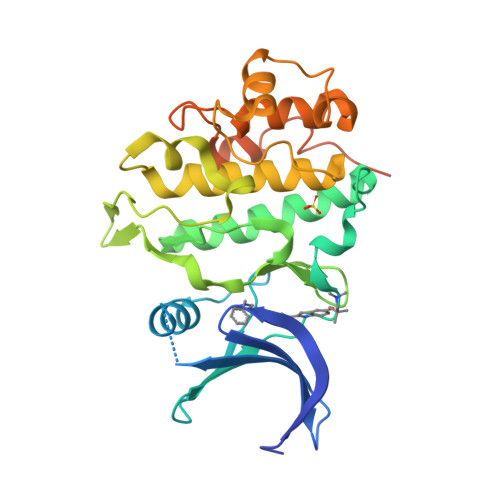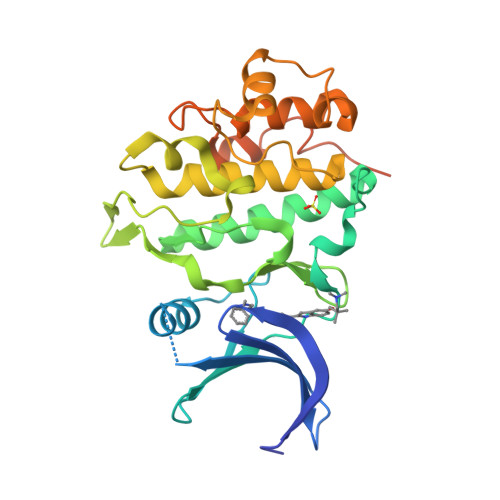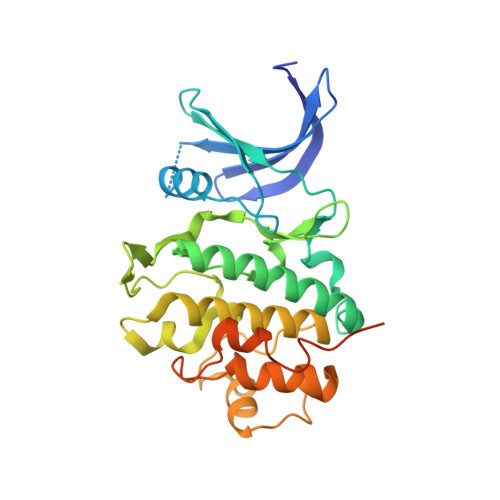Identification of novel, in vivo active Chk1 inhibitors utilizing structure guided drug design.
Massey, A.J., Stokes, S., Browne, H., Foloppe, N., Fiumana, A., Scrace, S., Fallowfield, M., Bedford, S., Webb, P., Baker, L., Christie, M., Drysdale, M.J., Wood, M.(2015) Oncotarget 6: 35797-35812
- PubMed: 26437226
- DOI: https://doi.org/10.18632/oncotarget.5929
- Primary Citation of Related Structures:
5DLS - PubMed Abstract:
Chk1 kinase is a critical component of the DNA damage response checkpoint especially in cancer cells and targeting Chk1 is a potential therapeutic opportunity for potentiating the anti-tumor activity of DNA damaging chemotherapy drugs. Fragment elaboration by structure guided design was utilized to identify and develop a novel series of Chk1 inhibitors culminating in the identification of V158411, a potent ATP-competitive inhibitor of the Chk1 and Chk2 kinases. V158411 abrogated gemcitabine and camptothecin induced cell cycle checkpoints, resulting in the expected modulation of cell cycle proteins and increased cell death in cancer cells. V158411 potentiated the cytotoxicity of gemcitabine, cisplatin, SN38 and camptothecin in a variety of p53 deficient human tumor cell lines in vitro, p53 proficient cells were unaffected. In nude mice, V158411 showed minimal toxicity as a single agent and in combination with irinotecan. In tumor bearing animals, V158411 was detected at high levels in the tumor with a long elimination half-life; no pharmacologically significant in vivo drug-drug interactions with irinotecan were identified through analysis of the pharmacokinetic profiles. V158411 potentiated the anti-tumor activity of irinotecan in a variety of human colon tumor xenograft models without additional systemic toxicity. These results demonstrate the opportunity for combining V158411 with standard of care chemotherapeutic agents to potentiate the therapeutic efficacy of these agents without increasing their toxicity to normal cells. Thus, V158411 would warrant further clinical evaluation.
Organizational Affiliation:
Vernalis Research, Granta Park, Cambridge, UK.


















